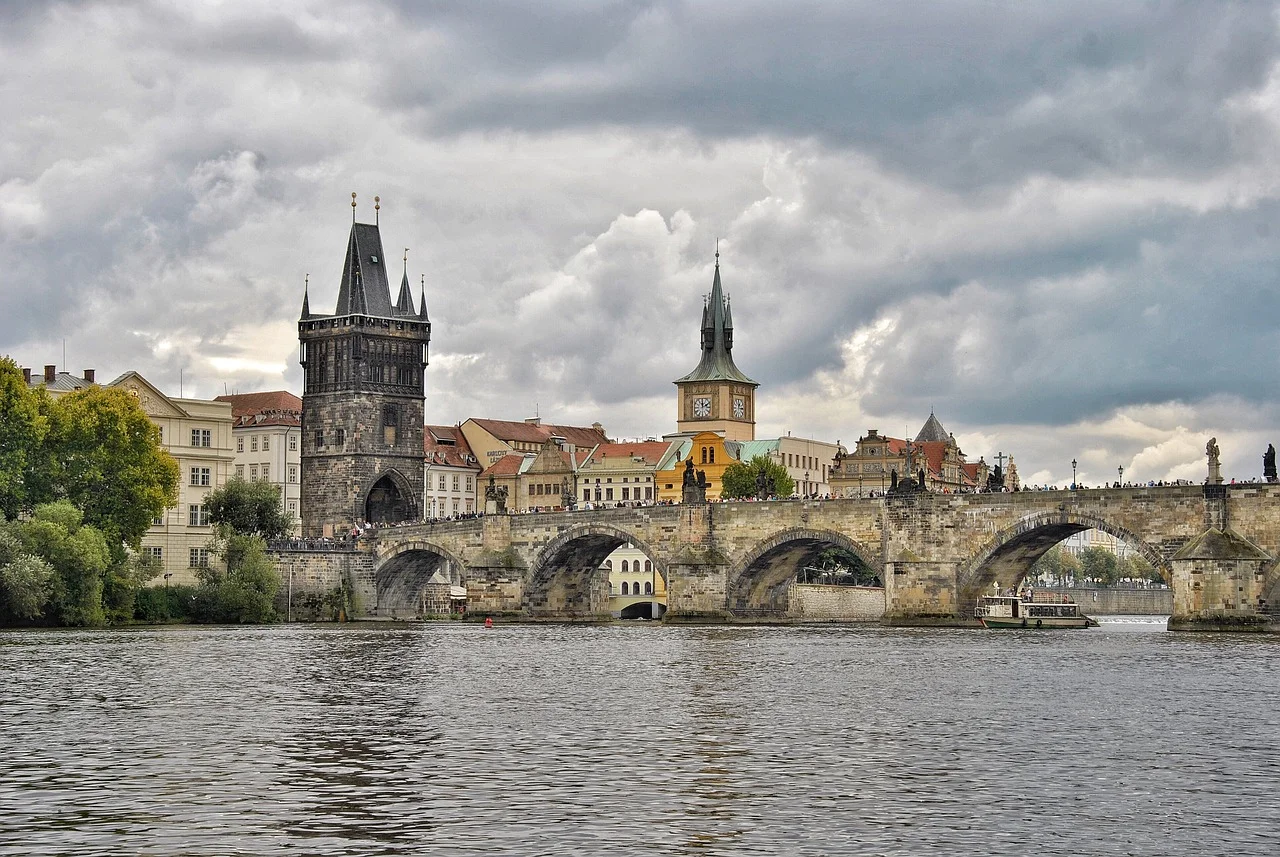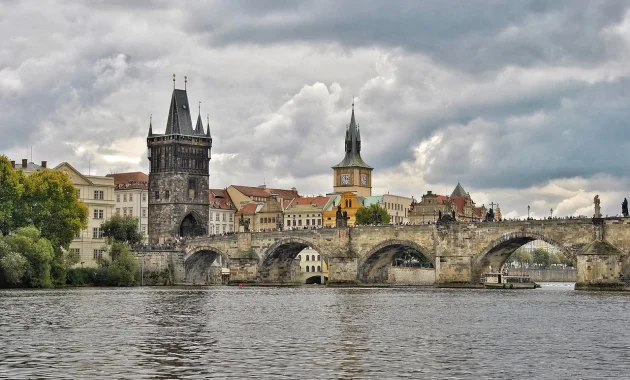
Prague, the capital city of the Czech Republic, is home to a multitude of historical monuments, but none captivate the imagination and history quite like the Charles Bridge. This architectural gem stretches across the Vltava River, linking the Old Town with the Lesser Town (Malá Strana) and leading directly to Prague Castle. Rich with history, adorned with magnificent statues, and offering breathtaking views, Charles Bridge is one of the most popular destinations for visitors to Prague. Let’s take a journey through the historic significance, architectural splendor, and the unique experience that a walk on this bridge offers.
The History of Charles Bridge
Constructed between 1357 and 1402, Charles Bridge stands as a testament to the ingenuity and artistic vision of the medieval era. Commissioned by King Charles IV, one of the most important figures in the history of Prague, the bridge was originally known as the Stone Bridge (Kamenný most) or Prague Bridge. It wasn’t until the 19th century that it acquired its current name.
The timing of the bridge’s construction is often associated with the belief in astrology. Legend has it that Charles IV laid the first stone on July 9, 1357, at exactly 5:31 am because numerologists believed this date and time (1357 9, 7 5:31) formed a numerical palindrome and would ensure the bridge’s stability and longevity.
Charles Bridge was a vital artery for trade between Eastern and Western Europe during the medieval period. For centuries, it was the only means of crossing the Vltava River, making it one of the most critical structures in the city’s economy and growth.
Architectural Marvel of Charles Bridge

Charles Bridge stretches for approximately 516 meters and is 10 meters wide, held up by 16 sturdy arches. These arches were specially designed to withstand the powerful flow of the Vltava River, though the bridge has been damaged and repaired several times throughout history due to floods.
The bridge is constructed using Bohemian sandstone, a durable material that has withstood the test of time. The Gothic-style bridge towers at each end—the Old Town Bridge Tower and the Lesser Town Bridge Towers—are considered masterpieces of medieval architecture. The Old Town Bridge Tower is particularly renowned for its intricate carvings and is often considered one of the most beautiful Gothic gateways in Europe.
Statues on Charles Bridge: A Gallery of Baroque Art
What makes Charles Bridge truly unique are the 30 baroque statues that line its balustrade. Added in the late 17th and early 18th centuries, these statues depict various saints and religious figures, reflecting Prague’s strong Catholic heritage. Among the most famous are the statues of Saint John of Nepomuk, Saint Vitus, and Saints Cyril and Methodius. Each statue tells a story, contributing to the rich historical and religious tapestry of the bridge.
The statue of Saint John of Nepomuk is perhaps the most well-known. According to legend, this priest was thrown into the Vltava River from the bridge after refusing to divulge the confessions of Queen Sophie to King Wenceslaus IV. The location where he was thrown is marked by a small plaque, and it is believed that touching this plaque brings good luck and ensures that you will return to Prague.
Many of the original statues have been moved to museums for preservation due to weathering, and replicas now adorn the bridge. However, these replicas still evoke the same sense of awe and connection to Prague’s past.
A Walk Along Charles Bridge: What to Expect
As you step onto Charles Bridge, you are instantly enveloped by the vibrant atmosphere. Whether you visit in the early morning when the bridge is bathed in the soft glow of sunrise or during the busy afternoons filled with tourists, local vendors, artists, and musicians, the experience is always enchanting.
Walking from the Old Town side, the Old Town Bridge Tower looms majestically in front of you. As you make your way across, each statue provides a glimpse into Prague’s religious and cultural history. The views from the bridge are nothing short of spectacular: to one side, you have a sweeping vista of Prague Castle perched on a hill, and on the other, the skyline of Old Town Prague with its distinct Gothic and Baroque architecture.
For many visitors, the highlight of the walk is reaching the Lesser Town side, where narrow cobblestone streets wind their way toward Malá Strana and up to Prague Castle. It’s easy to imagine medieval merchants and townspeople making this same journey centuries ago, adding a layer of historical resonance to your stroll.
The Role of Charles Bridge in Prague’s Cultural Identity
More than just a functional structure, Charles Bridge is an integral part of Prague’s identity. For centuries, it has been a witness to the city’s most important events. From coronations and processions to battles and floods, this bridge has stood steadfast through the many ups and downs of Prague’s history.
Today, it remains one of the city’s most popular attractions, drawing millions of visitors each year. Whether you are a lover of architecture, a history enthusiast, or simply someone who enjoys beautiful views, Charles Bridge offers something for everyone.
Local artists and vendors line the bridge, offering handmade crafts, jewelry, and paintings, creating a lively market atmosphere that only enhances the charm of this medieval masterpiece. Musicians also add to the ambiance, with live performances that echo through the ancient stonework.
Preserving the Legacy of Charles Bridge
Maintaining such a historical treasure requires constant effort. Over the centuries, Charles Bridge has faced numerous challenges, particularly from the elements. Flooding has been a recurrent problem, with the most devastating flood in recent history occurring in 2002, which led to significant damage. Extensive restoration work has since been undertaken to preserve the bridge’s structure and ensure that it continues to stand as a symbol of Prague for future generations.
The careful restoration process includes reinforcing the stone foundations and preserving the intricate details of the statues and towers. Conservationists have worked meticulously to ensure that modern interventions remain in keeping with the historical integrity of the bridge.
Conclusion: A Timeless Journey on Charles Bridge
A walk along Charles Bridge is more than just a stroll across a river—it’s a journey through centuries of history, art, and culture. Whether you’re drawn by the stunning views, the rich history, or the lively atmosphere, Charles Bridge offers an unforgettable experience for every visitor to Prague. As you make your way across its ancient stones, you are not just walking in the footsteps of millions who have crossed before, but also connecting with the enduring legacy of one of Europe’s most iconic landmarks.